By Rick VanSickle
Niagara’s Flat Rock Cellars is no stranger to providing some of the geekiest consumer wine experiments in the region.
Also is this Canadian Wine Report: A first look at B.C.’s Da Silva Vineyards and Winery, and a highly cellarable red blend from Henry of Pelham.
Clonal comparisons, wild vs commercial yeasts in fermentations, barrel selection, single block side-by-side bottlings, experimental plantings, cork vs screwcap … the list goes on and on at Flat Rock, a champion for the Twenty Mile Bench.
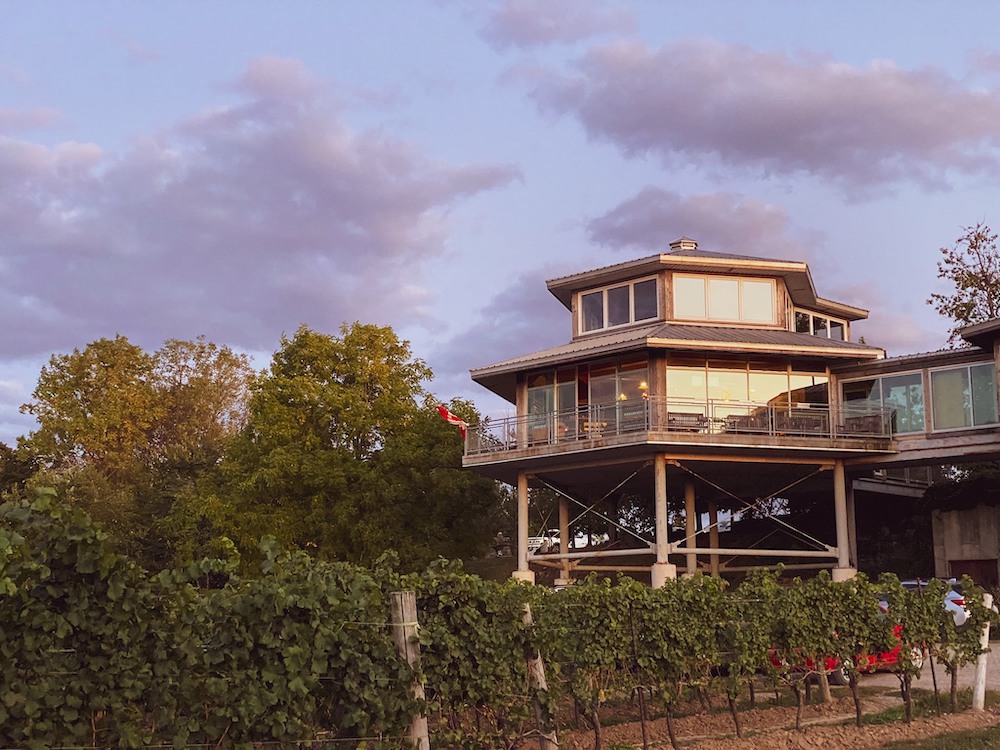
The good thing about these working experiments, other than satisfying their own curiosity, is the consumer aspect. The bottlings are made available so you can geek out along with the winemakers and come to your own conclusions.
The latest project, #12 if you are counting, takes winemakers “down the yeast rabbit hole” to explore the effects of two different yeast strains on a parcel of Chardonnay grapes, which were picked on Sept. 30, 2021, from the North Block of the Flat Rock Vineyard. Neutral French oak barrels were inoculated with either VL2 or Delta yeasts and underwent barrel fermentation.
The winemakers wanted to study the differences of the more familiar VL2 yeast strain, isolated in the caves of Burgundy, and a staple in Flat Rock Chardonnays, with the Delta strain, which is more common in aromatic white wines like Sauvignon Blanc and Riesling and new to Flat Rock.
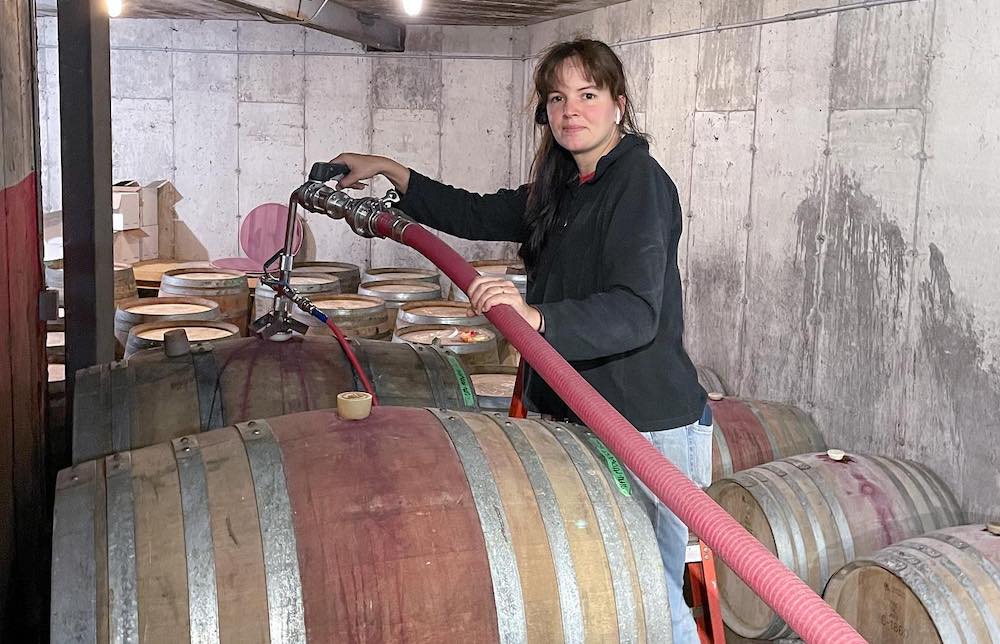
Estate winemaker Hayley Thompson, above, said the Delta strain “developed wonderful citrus and grapefruit notes that played well with the acidity, so we chose partial malolactic fermentation to preserve some of the freshness. In contrast, VL2 showed richer stone fruit characteristics and malolactic fermentation was completed, leading to a wine with a rounder mouth feel.”
Wines in Niagara tasted the two wines side-by-side and found enough differences in the two wines to gain a greater understanding of the impact of yeast and fermentation has on a wine otherwise made in exactly the same way. Of course, there are many other factors that shape a finished wine — vintage, oak treatment (or lack thereof), the vineyard (terroir), malo, climate, yields, and a thousand other little things — but for this experiment the differences are clear.
The “Fermentation Trials” Chardonnay two-pack, exploring the effects of different yeast strains on the exact same grapes, can be purchased at the winery for $70 for a two pack or you can buy them individually.
Here are our thoughts on the two wines, along with Flat Rock’s popular entry level Chardonnay.
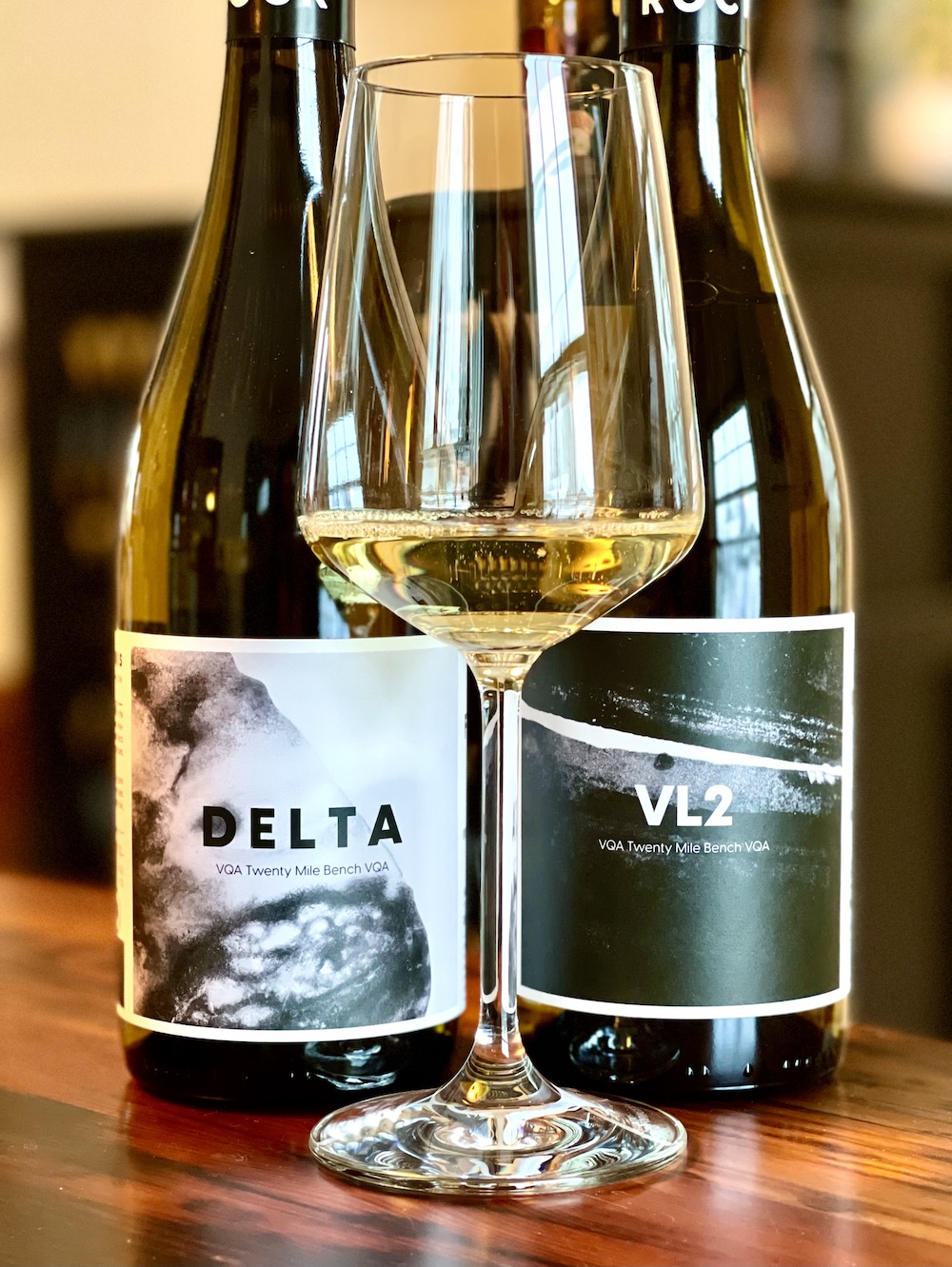
Flat Rock Cellars Project No. 12 Delta Chardonnay 2021 ($35, 92 points) — Delta is new to Flat Rock and used more often in aromatic whites. It has an interesting flinty/minerally nose with a melange of pear, grapefruit, tropical notes, perfumed spice notes and lemon curd. It’s creamy and flinty on the palate with pear/quince fruits, grapefruit and underlying tropical notes with toasted vanilla, rounded on the palate without being flabby, and a long, lifted finish.
Flat Rock Cellars Project No. 12 VL2 Chardonnay 2021 ($35, 93 points) — VL2 is a staple yeast strain at Flat Rock and it, too, has a lovely flinty minerality (more a trait of the vineyard than the yeast) with creamy pear, golden apple, fresh lemon, toasted vanilla, and light spice notes. It’s lovely on the palate, much more elegant and textured than the Delta version, with ripe stone fruits, creamy/flinty notes, lemon curd, integrated fine oak spices and a clean, vibrant finish.
Conclusion: Hard to pick the winner, but Flat Rock won’t likely move away from the VL2 yeast. If I had to pick one, it would be that. It’s hard to beat elegance, poise, and balance as a determining factor. A side-by-side tasting of these two wines is highly recommended and you can by the judge.
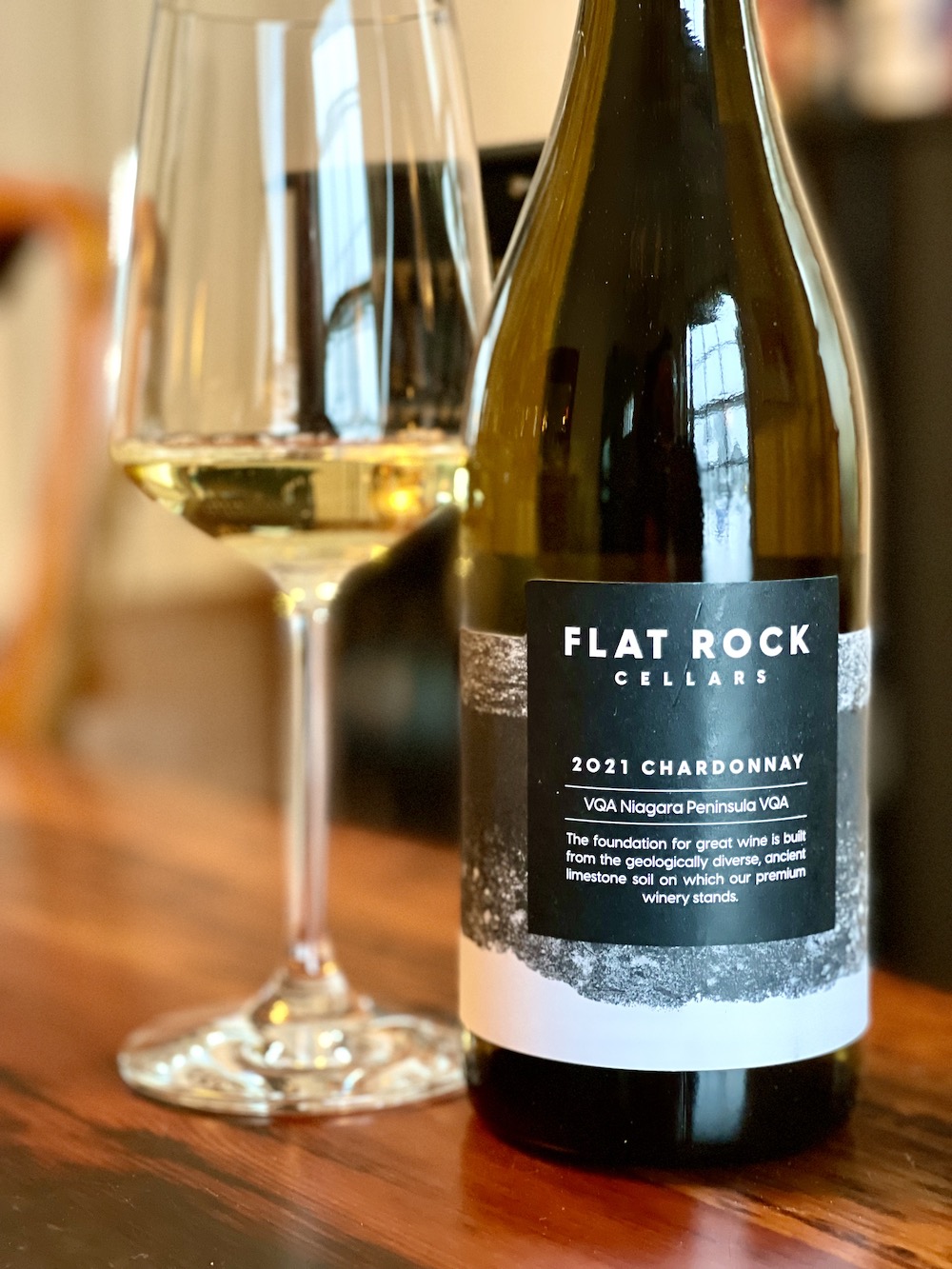
Flat Rock Cellars Chardonnay 2021 ($20, $2 off from Jan. 29-Feb. 25, 88 points) — This “Foundation Series” Chardonnay is a smart buy with a clean, fresh nose of pear, apple skin, lemon/citrus, subtle creamy notes, and spice. It is lovely on the palate with juicy stone fruits, bright citrus notes, integrated spices and a bright, lifted finish.
A beauty from Henry of Pelham
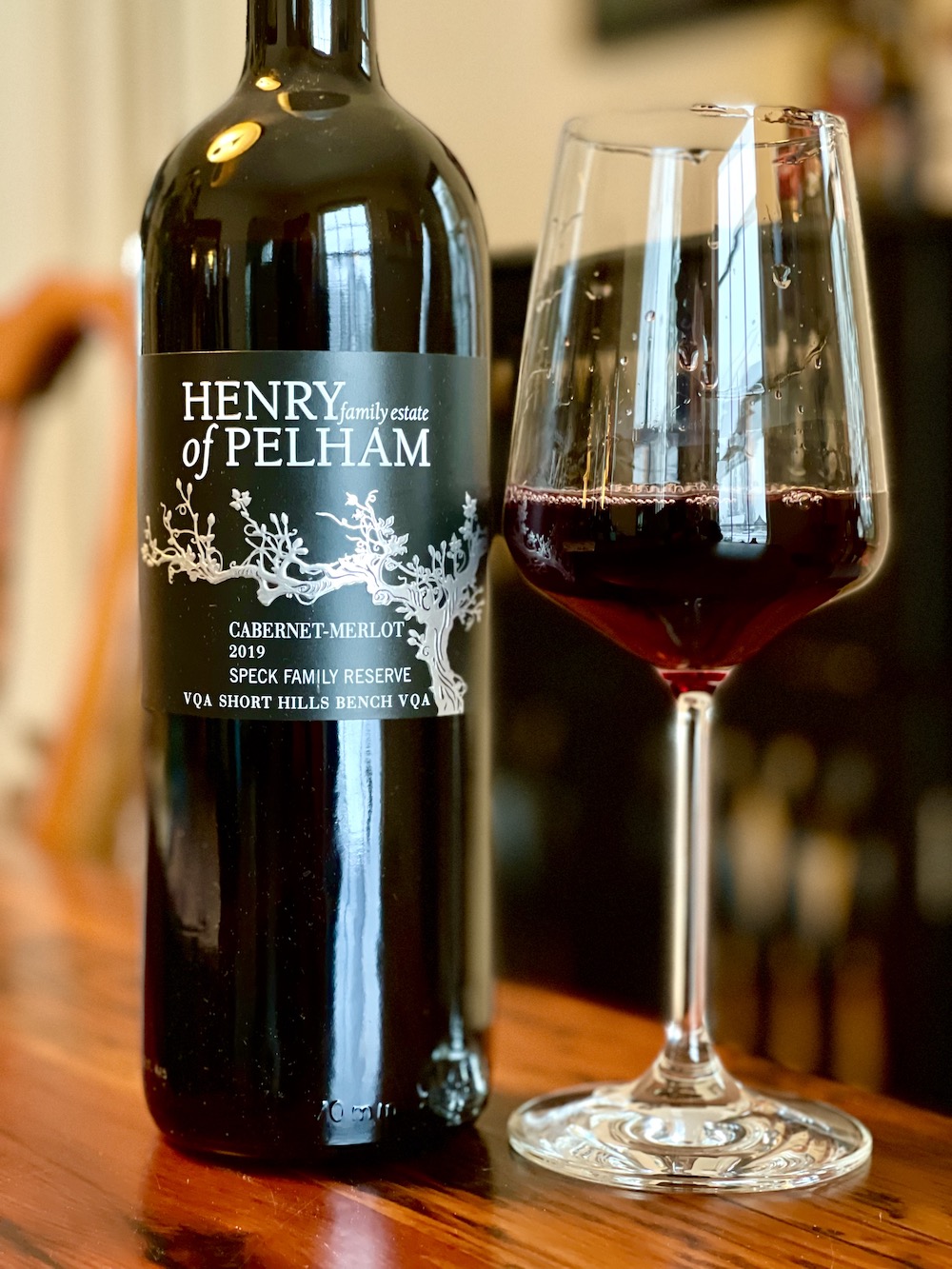
Henry of Pelham Speck Family Reserve Cabernet-Merlot 2019 ($45, winery now, Vintages March 4, 93 points) — This top-tier red is an assemblage of old vine Merlot, Cabernet Sauvignon and Cabernet Franc that’s aged for 18 months in French and American oak, 40% new barrels. It has a rich, savoury, and persistent nose of smoky black raspberries, black currants, anise, plums, mulled herbs, and integrated spice notes. It’s mouth filling on the palate with a concentrated melange of dark and red berries, supple tannins, saddle leather, subtle smoky notes with a long, lifted, and persistent finish. A perfect winter red that will reward with 10+ years in the cellar.
Da Silva Vineyards and Winery (B.C.)
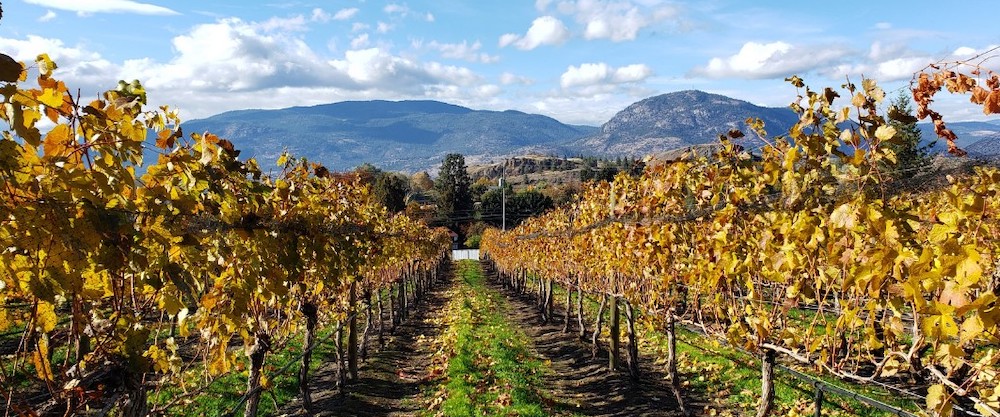
The Da Silva family has been farming the Okanagan Valley since they arrived in the 1950s, continuing the work of their ancestors who have been involved in farming and winemaking on Portugal’s Azores Islands since the 1700s.
From humble beginnings in Canada, the family’s hard work and farming expertise gave them the opportunity to purchase their first family orchard on the Naramata Bench in 1959. With over 60 years of farming in the South Okanagan, the family intrinsically understands the many unique and diverse aspects of the land.
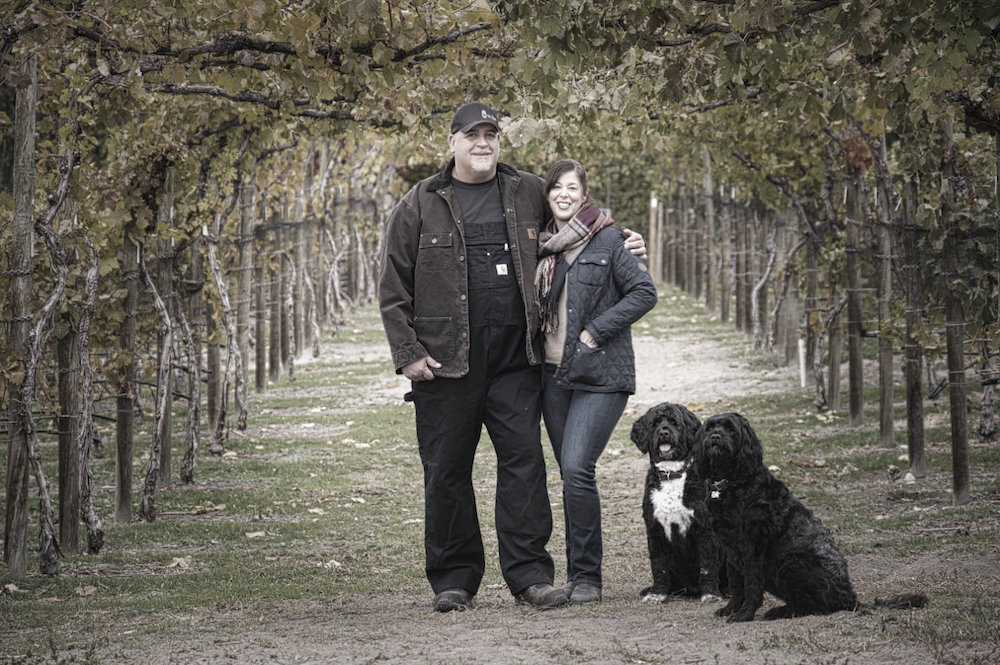
Today, Richard and Twylla Da Silva, above, continue their family’s tradition of a deep-rooted connect and respect for the land at the southern edge of the Naramata Bench where they built the Da Silva Vineyards and Winery. “We drew extensively from this heritage when creating our winery in 2006,” said Richard Da Silva. “The evolution of our journey and wines are a testament to our family lineage.”
The family has created a network of 11 vineyards (nine estate vineyards) all selected for their distinct terroir with a focus on creating a portfolio of wines that reflect the diversity of microclimates in the South Okanagan and Similkameen valleys.
This is Wines in Niagara’s first look at the wines from Da Silva.
The wines
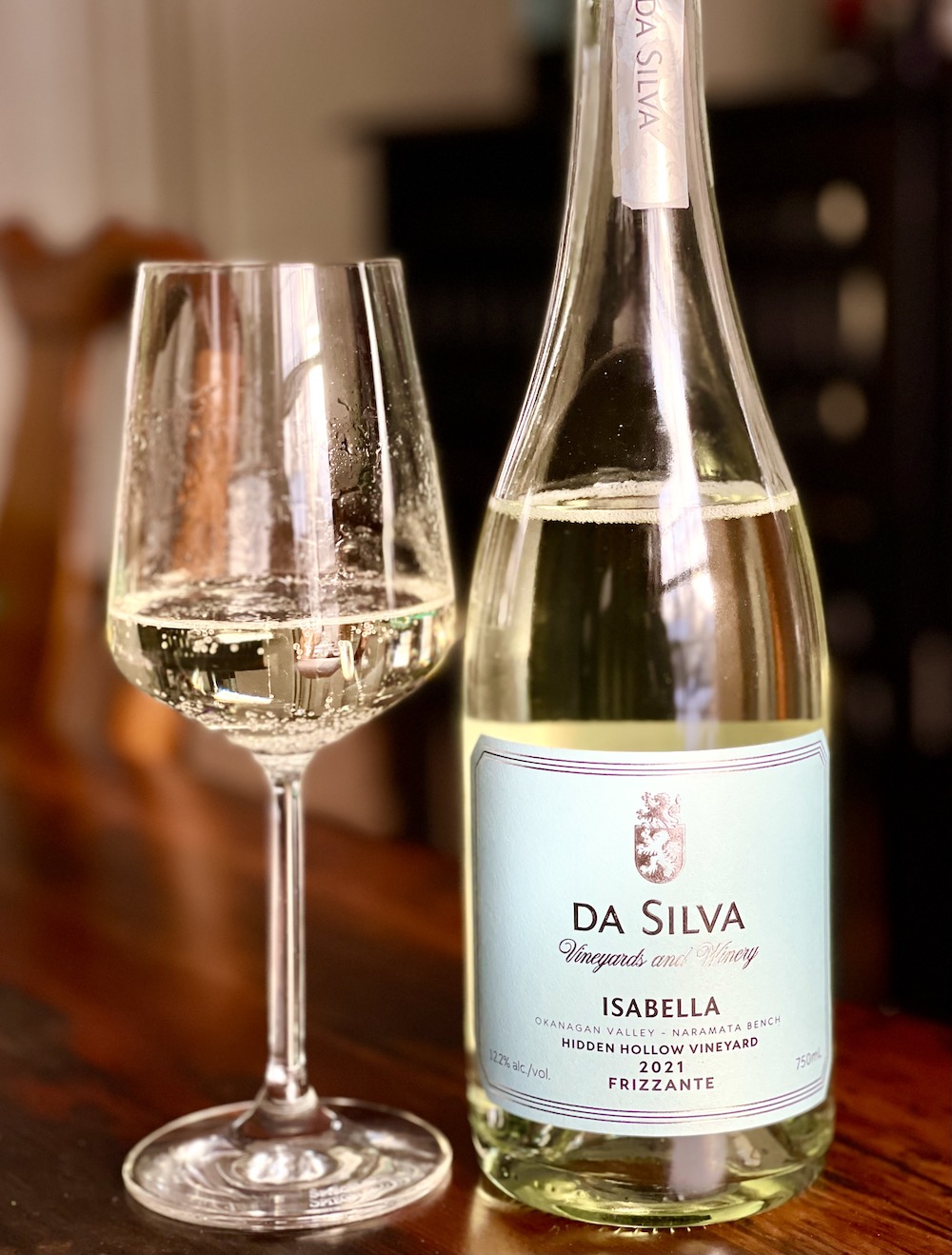
Da Silva Isabella Frizzante 2021 ($29, 88 points) — This “frizzante” style of sparkling wine is a blend of 75% Riesling and 25% Muscat made in a subtle spritzy style. It has a vivid nose of summer peaches, Meyer lemons, lime, green apples, and apricots. It’s fresh and lively on the palate, driven by racy acidity, teeming with peaches, citrus, a touch of honey, soft effervescence, and a vibrant finish. Fun bubbly wine.
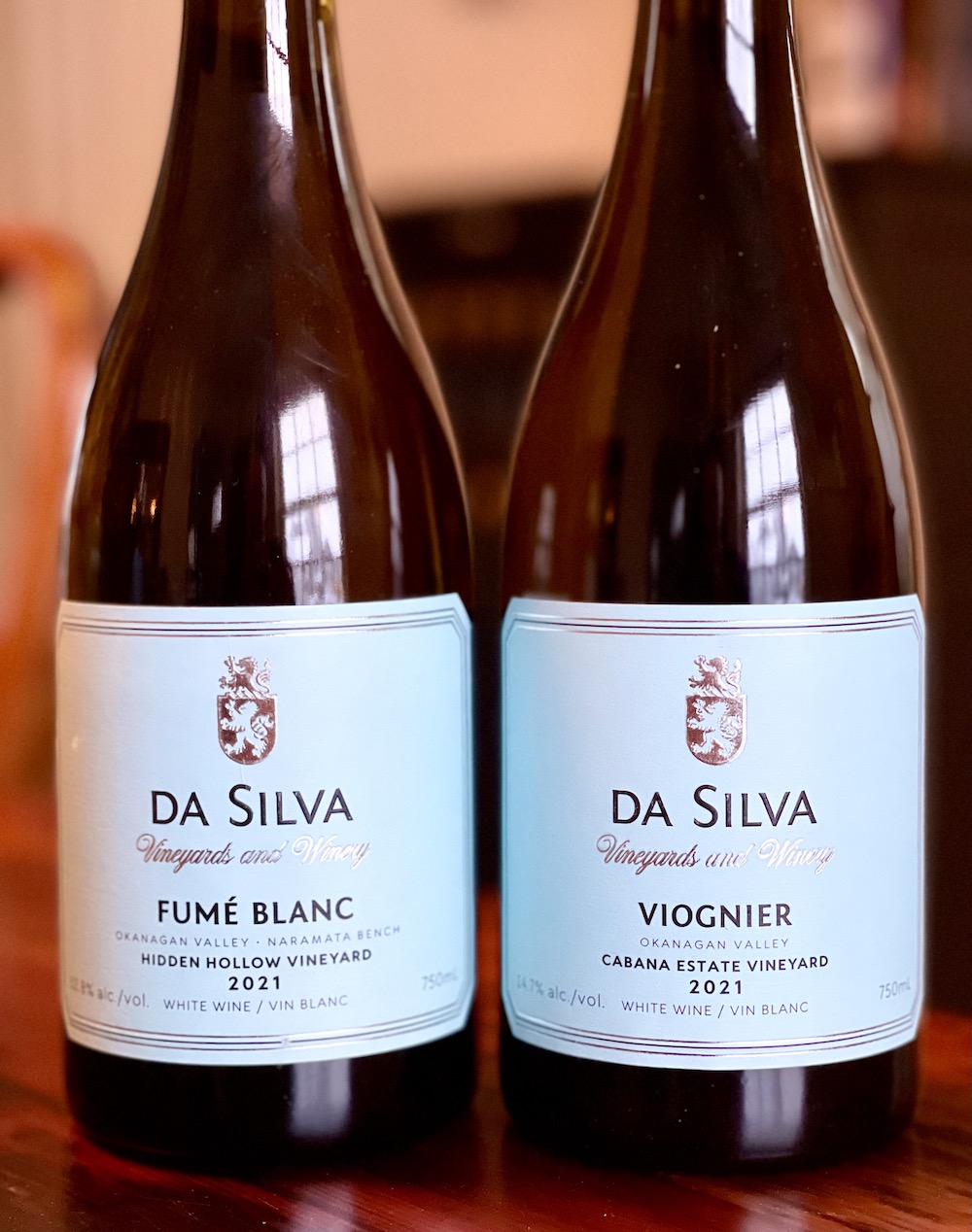
Da Silva Fumé Blanc 2021 ($32, 90 points) — The grapes for this 100% Sauvignon Blanc are sourced from two estate vineyards in Penticton — Blenheim Hill and Hidden Hollow. The wine is fermented in stainless steel and then aged in American oak for 8 weeks on the lees. The nose reveals grapefruit, kiwi, gooseberries, fresh herbs, pear, and subtle toasty spice notes. It’s nicely balanced on the palate with integrated grapefruit, gooseberries, herbs, and a touch of oak influence. Tingly acidity on the finish keeps it lively through the finish.
Da Silva Viognier 2021 ($30, 91 points) — The fruit is sourced from the Cabana Estate Vineyard in Osoyoos, and it was fermented in stainless steel. It has a pretty nose of juicy peaches, grapefruit, apricots, and ginger. It has an oily texture on the palate with a bit of heat (14.9% abv) and a rich broth of peach preserves, ripe exotic fruits, ginger, and a touch of honey. The racy acidity keeps everything in check through the finish.
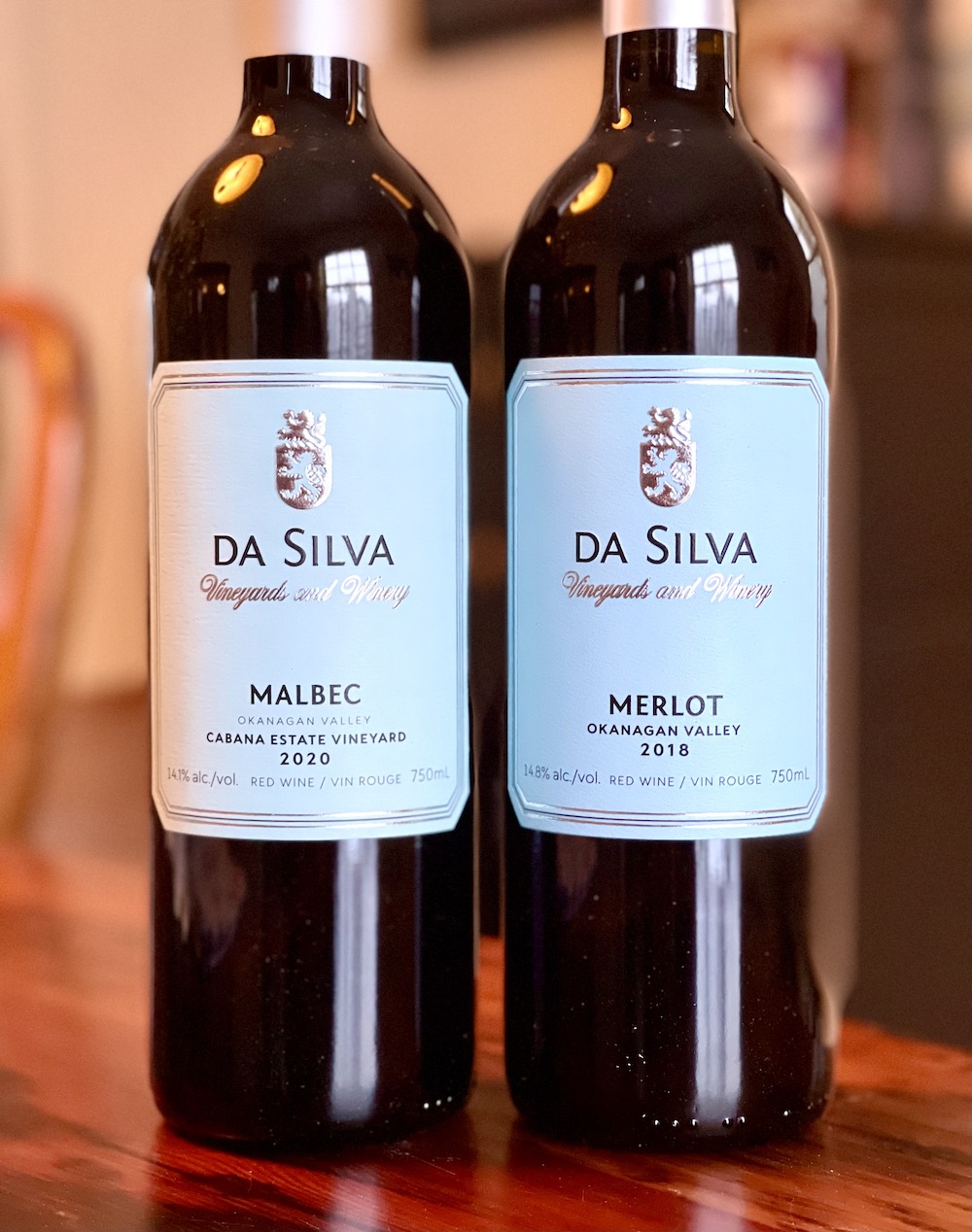
Da Silva Malbec 2020 ($38, 92 points) — Sourced from the Cabana Estate Vineyard in Osoyoos, this Malbec is aged in a combination of American and French oak for 20 months. It has a highly perfumed nose of forest berries, sweet dark cherries, wild herbs, black cherries, toasted vanilla bean and rich spice notes. It’s lovely on the palate with rich and concentrated red berries, savoury spice notes, thyme, blueberries, earthy notes, firm tannic structure, licorice, and plenty of zip through the long finish. Can cellar 5+ years.
Da Silva Merlot 2018 ($40, 92 points) — The grapes are sourced from the estate’s Blenheim Hill Vineyard and the neighbouring Lazy Dog Vineyard both in Penticton. It’s aged for 36 months in a combination of French and American oak from a selection of the best Merlot grapes available to the estate from 2018. The nose shows an array of plump black cherries, wild raspberries, plums, dried herbs, and fine oak spice notes. It’s highly structured and bold on the palate with firm tannins, ripe red berries, anise, herbs, fine oak spices, and a touch of heat (14.8% abv) with enough fruit and structure to handle it. There is length and finesse on the finish and plenty of oomph to age this 7+ years.
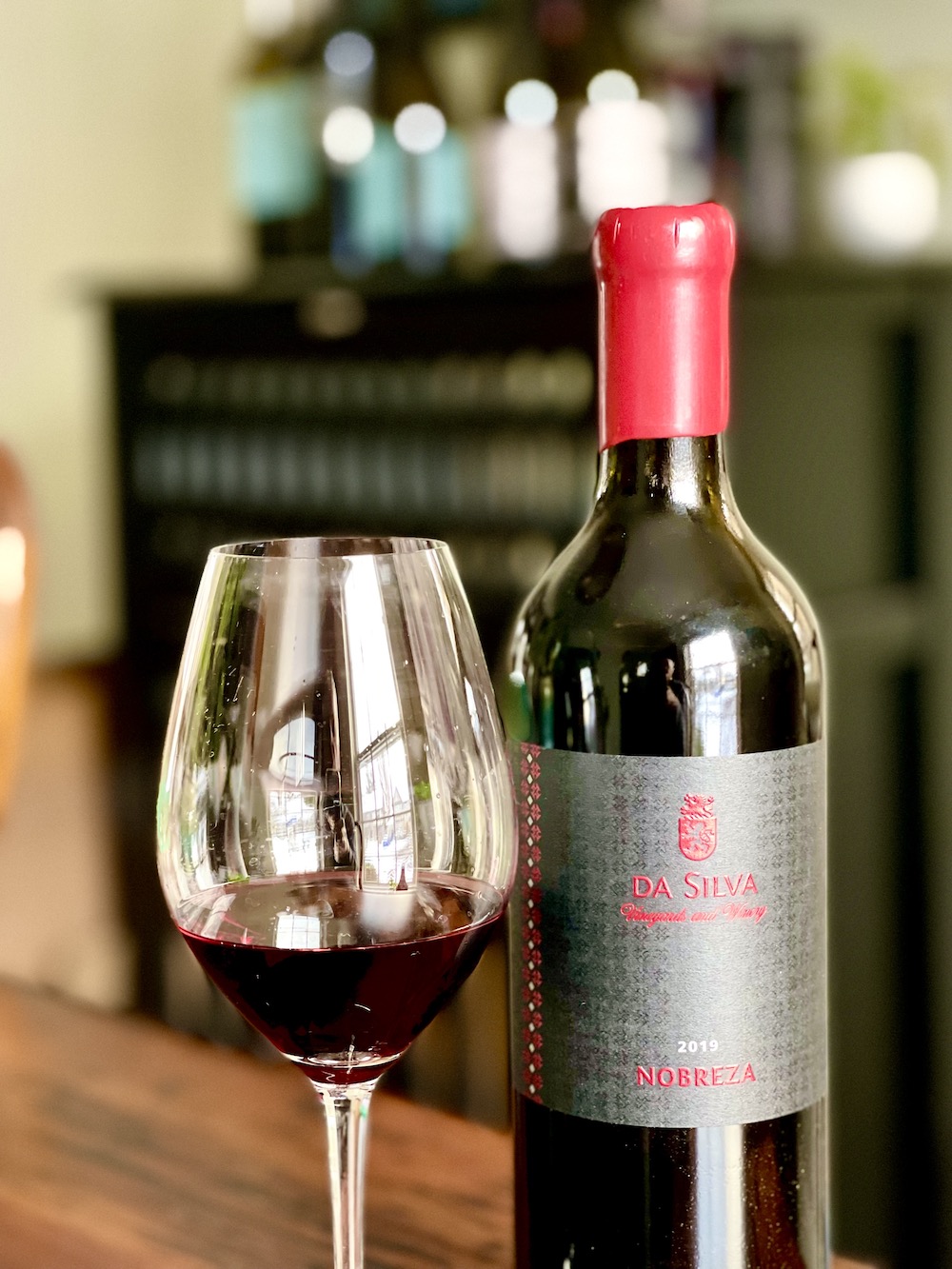
Da Silva Nobreza 2019 ($95, 93 points) — The blend of 60% Merlot, 25% Cabernet Sauvignon and 15% Cabernet Franc was sourced from the estate’s Blenheim Hill Vineyard, Lazy Dog Vineyard, Avila Family Vineyard, and Outwash Vineyard. The wine was aged for 26 months in French and American oak and represents the best of what Da Silva does in any given vintage. It has an expressive nose of rich, ripe black currants, blackberries, dark cherries, jammy cassis, black raspberries, leather/earthy notes, American oak inspired caramel, dried cigar tobacco and savoury notes. It’s rich and full-bodied on the palate with jammy black fruits, ripe red berries, firm tannic structure, licorice, earthy notes, tobacco, fine oak spices in a complex and layered style that all leads to a long finish with mouth-watering acidity. A big red with potential to improve with 10 years or more of cellaring. A treat of big red wine with somewhat restrained abv of 14.4%.






Comment here